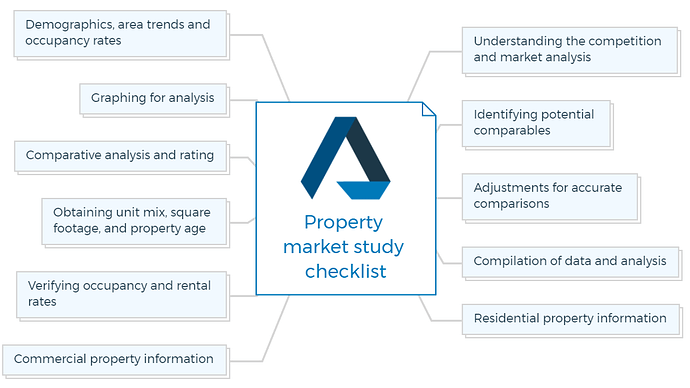Checklist for preparing a property market study
1. Understanding the competition and market analysis
2. Identifying potential comparables
- Create a list of properties similar to the subject property in terms of type, target market, and location.
- Utilize sources like property managers, real estate boards, and databases for additional comparables.
3. Adjustments for accurate comparisons
- Make necessary adjustments for utilities, amenities, and features of comparable properties.
- Consider tenant payment responsibilities and operational cost differences when making adjustments.

 You are missing out if you haven’t yet subscribed to our YouTube channel.
You are missing out if you haven’t yet subscribed to our YouTube channel.
4. Compilation of data and analysis
- Gather information on each comparable property, including photographs.
- Use market study comparable forms for consistent data collection and analysis.
5. Residential property information
- Collect details for residential properties, such as address, age, unit mix, square footage, rental rates, parking costs, bedrooms, bathrooms, utilities, unit features, property amenities, lease terms, concessions, occupancy rates, and property owner/management contacts.
6. Commercial property information
7. Verifying occupancy and rental rates
- Contact the local postal clerk for tenant count verification.
- Consult local utility companies for occupancy status.
- Observe units for occupancy during visits.
- Inquire with property managers or owners multiple times if needed.
- Review real estate classifieds for advertised rates and concessions.
8. Obtaining unit mix, square footage, and property age
- Contact the local building department for original building plans.
- Check local tax assessment department records for necessary information.
9. Comparative analysis and rating
- Rate neighbouring properties based on appearance, architectural design, management quality, location, amenities, terms, tenant profile, financing, allowances, and concessions.
- Standardize the rating process for consistent analysis.
10. Graphing for analysis
- Graph data for the visual representation of market conditions.
- Plot square footage against adjusted rental rates.
- Draw an average line for comparison.
- Analyze how the subject property compares to the market average.
11. Demographics, area trends and occupancy rates
- Review area demographics, population trends, and income levels.
- Analyze area trends regarding economic growth, job opportunities, and infrastructure development.
- Consider occupancy rates to understand demand and market equilibrium.
You are missing out if you haven’t yet subscribed to our YouTube channel.


